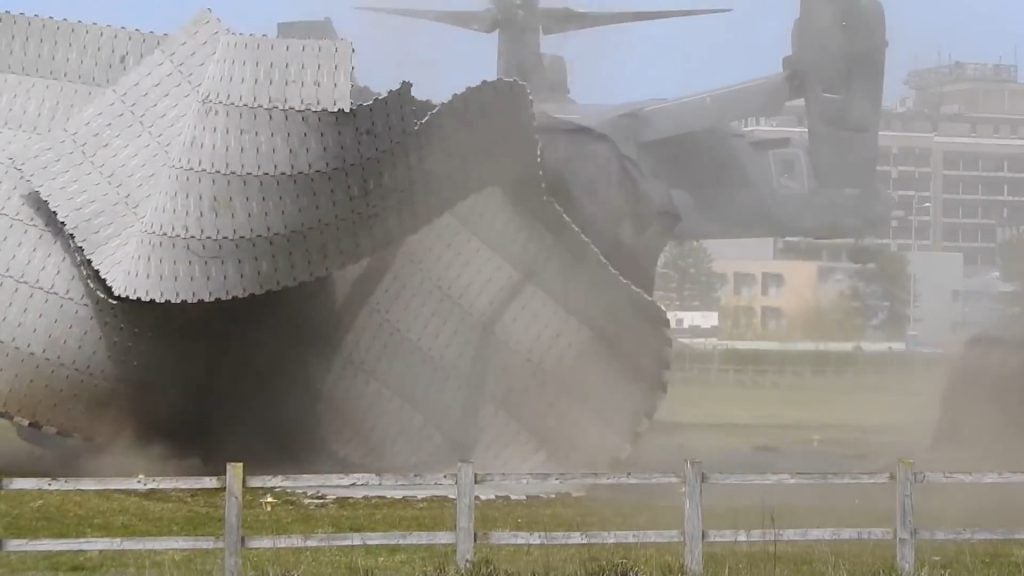US Air Force MV-22 Osprey Blows Away British Hospital Helipad
The helipad of Addenbrooke’s Hospital in Cambridge has been rendered unusable to air ambulances, after it was accidentally destroyed during a US military exercise when a US Air Force MV-22 Osprey took off from the helipad.
Trailspotter uploaded a video of the April 21 incident. In it, the Osprey comes in to land on the grass adjacent to the helipad without issue. However, when it prepares to take off, the rotor wash from its twin engines dislodges part of the helipad’s rubber matting, completely blowing away the matting once the tiltrotor leaves the ground.
The helipad was built in 2012 as a temporary helipad, providing faster air access to Addenbrooke’s, which is the main trauma center for the East of England. The helipad was used by the East Anglian Air Ambulance, Magpas Air Ambulance as well as Essex and Herts Air Ambulance. With the helipad unusable, air ambulances will have to use the Cambridge City Airport helipad three miles away, with patients transported by land ambulance to the hospital.
In a statement to ITV News, Dr Victor Inyang, Medical Director of East Anglian Air Ambulance stated:
“Due to an incident at the Cambridge University Hospitals helipad involving a military aircraft on Wednesday 21 April the helipad is temporarily unavailable to air ambulances.
The next closest helipad is at Cambridge City Airport, where one of the East Anglian Air Ambulance (EAAA) teams is based.
It will be possible for the EAAA helipad to be used as an alternative landing site during this time and have patients transferred to Addenbrooke’s from there by land ambulance.
Addenbrooke’s is the major trauma centre for the region, therefore quick and efficient transfer of critically ill or injured patients to the hospital is vital.
Using the EAAA helipad is the best alternative while the CUH helipad is reinstated.”
The incident was confirmed by the USAF, with Maj. Keavy Rake of the 48th Fighter Wing at RAF Lakenheath saying:
“The area was surveyed according to our policies and procedures and some damage did occur.
We are taking steps to rectify as soon as possible.
Our units are continuously coordinating with our local partners to improve operations. We are greatly appreciative of the relationship and coordination we have with the U.K.”
A spokesperson for Cambridge University Hospitals, Addenbrooke’s operator, told ITV that: “While our normal helipad is being repaired air ambulances will temporarily land at nearby Cambridge City Airport and patients are then transferred to the hospital in road ambulances with critical care staff on board, meaning we can continue to see and treat them as normal.”
The Cambridge Independent now reports that as of this afternoon, Cambridge University Hospitals has provided an update saying: “The site is now cleared and safety checks are taking place. Once completed, the usual helipad will reopen”.
The powerful engines needed to facilitate the Osprey’s vertical takeoff and landing make for an equally mean downwash. A 2010 New York City Fleet Week Exhibition demonstration of a Marine Corps Osprey in Staten Island’s Clove Lakes Park wound up dislodging tree limbs as the tiltrotor came in to land, injuring ten. However, powerful downwash is hardly exclusive to the Osprey, as demonstrated by an infamous video of a Libyan Chinook helicopter blowing away a tent when coming in to land during preparations for a ceremony.

